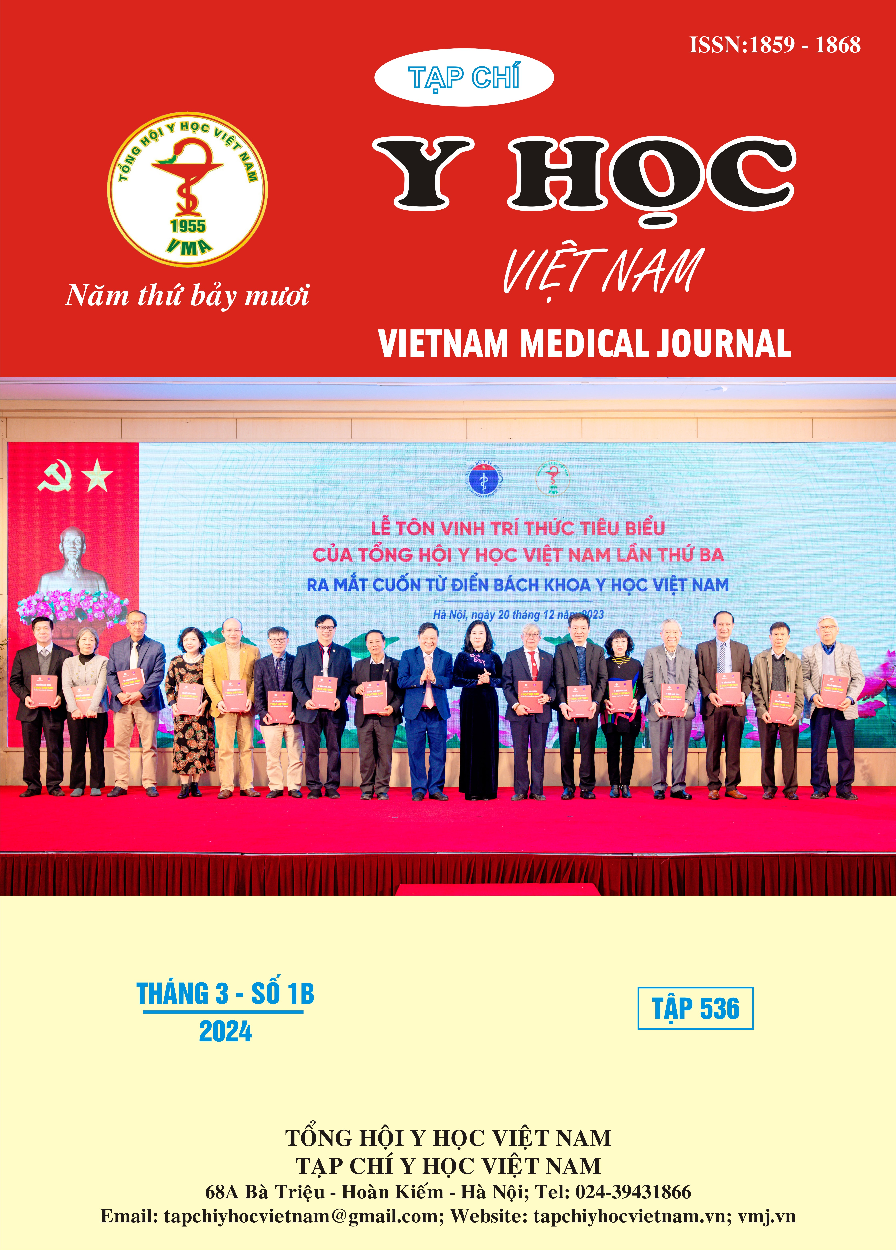APPLICATION OF 4-HAND TECHNIQUE IN ENDOSCOPIC ENDONASAL APPROACH TO REMOVE JUVENILE NASOPHARYNGEAL ANGIOFIBROMA
Main Article Content
Abstract
Background: Surgical removal of Juvenile Nasopharyngeal Angiofibroma (JNA) is challenging because of the tumor’s intricate blood supply and the complex anatomy of the surrounding structures, such as the pterygopalatine fossa, infratemporal fossa, and skull base. Endoscopic surgery offers a minimally invasive approach that improves visualization, preserves bone integrity, and lowers the risks of complications and recurrence. Objective: The article review staging of the tumor and outcomes of surgical approach to remove JNA. The application of the four-arm surgery technique and preoperative embolization measures are discussed. Method: We conducted a prospective study of 34 cases of JNA at the ENT Hospital of HCM city from July 2019 to July 2023. 30 cases were embolized 24 - 48 hours before surgery. Result: According to Andrews' classification, there were 6 cases of stage I, 22 cases of stage II, 3 cases of stage IIIA and stage IIIB. During surgery, there were 21 cases with blood loss less than 500 ml, 7 cases with blood loss from 500-1000 ml and 6 cases with blood loss more than 1000 ml, 7 cases requiring blood transfusion. Conclusion: Endoscopic surgery to remove JNA has the advantage of avoiding external scars and craniofacial deformities in young patients but also controlling the spreading and distant parts of the tumor but also controls blood loss well, shortens surgery time, and has a gentle postoperative period. The 4-hand surgery technique is suitable for endoscopic surgery to remove JNA.
Article Details
References
2. Rupa V, Mani SE, Backianathan S, Rajshekhar V. Management and Outcome in Patients with Advanced Juvenile Nasopharyngeal Angiofibroma. Journal of neurological surgery Part B, Skull base. Aug 2018;79(4):353-360. doi: 10.1055/s-0037-1608658
3. Douglas R, Wormald PJ. Endoscopic surgery for juvenile nasopharyngeal angiofibroma: where are the limits? Current opinion in otolaryngology & head and neck surgery. Feb 2006;14(1):1-5. doi:10.1097/01.moo.0000188859.91607.65
4. Langdon C, Herman P, Verillaud B, et al. Expanded endoscopic endonasal surgery for advanced stage juvenile angiofibromas: a retrospective multi-center study. Rhinology. Sep 2016;54(3):239-46. doi:10.4193/Rhin15.104
5. Janakiram TN, Sharma SB, Panicker VB. Endoscopic Excision of Non-embolized Juvenile Nasopharyngeal Angiofibroma: Our Technique. Indian journal of otolaryngology and head and neck surgery: official publication of the Association of Otolaryngologists of India. Sep 2016; 68(3):263-9. doi:10.1007/s12070-016-1013-1
6. Janakiram TN, Parekh P, Haneefa H, Prasad SK. Endoscopic Three-surgeon Six-handed Transorbital Transnasal Technique for Excision of Juvenile Nasopharygeal Angiofibroma: New Frontier Explored. Asian journal of neurosurgery. Oct-Dec 2017;12(4):790-793. doi:10.4103/1793-5482.181148
7. Llorente JL, Lopez F, Suarez V, Costales M, Suarez C. [Evolution in the treatment of juvenile nasopharyngeal angiofibroma]. Acta otorrinolaringologica espanola. Jul-Aug 2011;62(4): 279-86. Evolucion en el tratamiento de los angiofibromas nasofaringeos juveniles. doi:10.1016/j.otorri.2011.02.002
8. Snyderman CH, Pant H, Carrau RL, Gardner P. A new endoscopic staging system for angiofibromas. Archives of otolaryngology--head & neck surgery. Jun 2010;136(6):588-94. doi:10.1001/archoto.2010.83
9. Makhasana JA, Kulkarni MA, Vaze S, Shroff AS. Juvenile nasopharyngeal angiofibroma. Journal of oral and maxillofacial pathology : JOMFP. May-Aug 2016;20(2):330. doi:10.4103/ 0973-029x.185908


